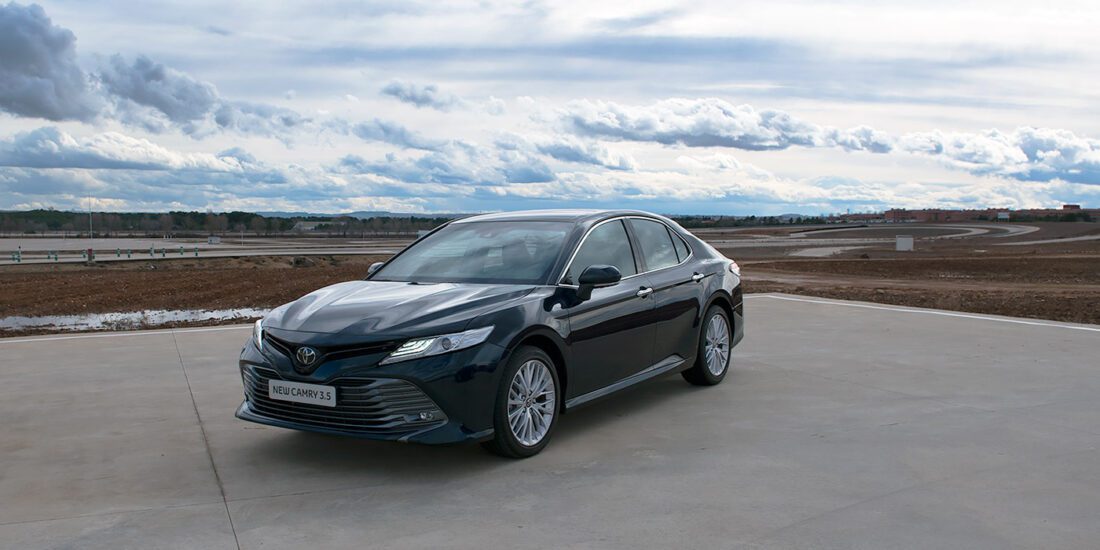
Test drive the new Toyota Camry
The new generation Camry sports a scattering of high-tech solutions: a new platform, a scattering of driver assistants, and the largest head-up display in its class. But the most important thing is not even this
Secret training ground INTA (this is something like the Spanish NASA) near Madrid, cloudy and rainy weather, strict timing - acquaintance with the new Camry begins for me with a light déjà vu. Almost four years ago, here in Spain, under similar circumstances, the Russian office of Toyota showed a restyled Camry sedan with the body index XV50. Then the Japanese sedan, although it left a pleasant impression, was not at all surprised.
Now the Japanese are promising that things will be different. The XV70 sedan is built on the new global TNGA architecture, which will be used to launch a huge number of new Toyota and Lexus models for completely different markets. The platform on which the car is based is called the GA-K. And the Camry itself has become global: there is no longer a difference between cars for the North American and Asian markets. Camry is now one for all.
In addition, within the framework of the TNGA architecture, models of completely different sizes and classes will be built. For example, the new generation Prius, compact crossovers Toyota C-HR and Lexus UX are already based on it. And in the future, in addition to the Camry, the next generation Corolla and even the Highlander will move to it.
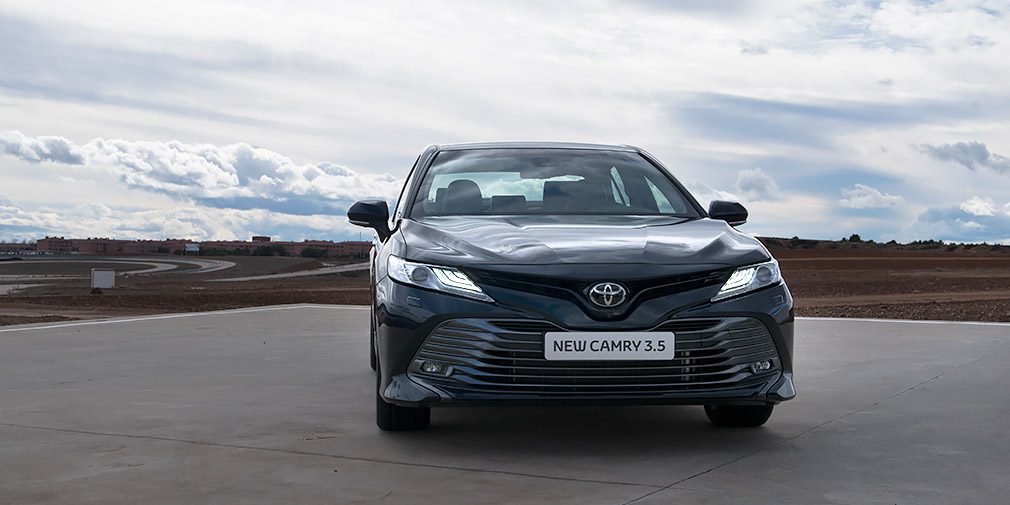
But all this will be a little later, but for now, the Camry's transition to a new platform required a global rework of the car. The body is built from scratch - more light, high-strength alloy steels are used in its power structure. Therefore, the torsional stiffness increased immediately by 30%.
And this despite the fact that the body itself has increased in size in the main directions. The length is now 4885 mm, the width is 1840 mm. But the height of the car has decreased and is now 1455 mm instead of the previous 1480 mm. The bonnet line has also dropped - it is 40 mm lower than the previous one.

All this is done to improve aerodynamics. The exact value of the drag coefficient is not called, but they promise that it fits into 0,3. Despite the fact that the Camry is slightly crippled, it is not heavier: the curb weight varies from 1570 to 1700 kg depending on the engine.
The global restructuring of the body is primarily due to the fact that the new platform provides for a different suspension scheme. And if in front the general architecture remained similar to the old one (there are still MacPherson struts here), then a multi-link design is now used at the back.

Departure to the high-speed oval of the INTA polygon presents the first pleasant surprise. Any little thing on the road, whether it be the asphalt joints or hastily sealed with tar microcracks, are extinguished at the root, without being transferred either to the body, or even more so to the salon. If anything reminds of small irregularities under the wheels, it is a slight dull sound coming from somewhere under the floor.
At the same time, on large waves of asphalt there is not even a hint that the suspensions can work into a buffer. The strokes are still great, but the dampers are no longer so soft, but rather tight and resilient. Therefore, the car no longer suffers from excessive longitudinal swing, like the previous one, and it keeps more stable on the high-speed line.
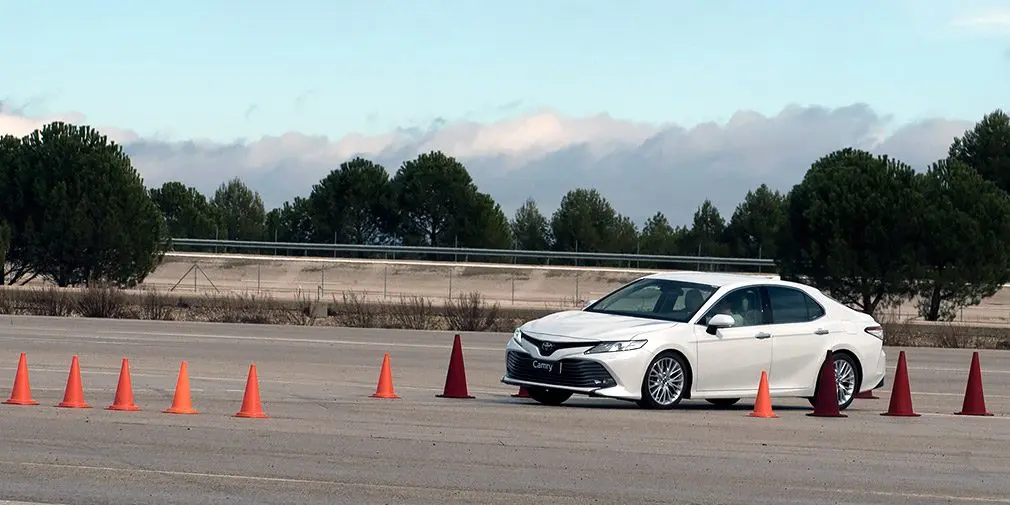
By the way, here, on the high-speed oval, one can feel what a serious step forward the Japanese have made in terms of soundproofing the new Camry. A five-layer mat between the engine compartment and the passenger compartment, a bunch of plastic plugs in all the service openings of the body, a larger and denser sound-absorbing lining on the rear shelf - all this works for the benefit of silence.
Full clarity comes here, on the oval, when at speeds of 150-160 km / h you realize that you can continue talking with the passenger sitting next to you without raising your voice. No whistles or whistles from the air swirls - just a smooth rustle from the air stream running on the windshield, which evenly increases with increasing speed.
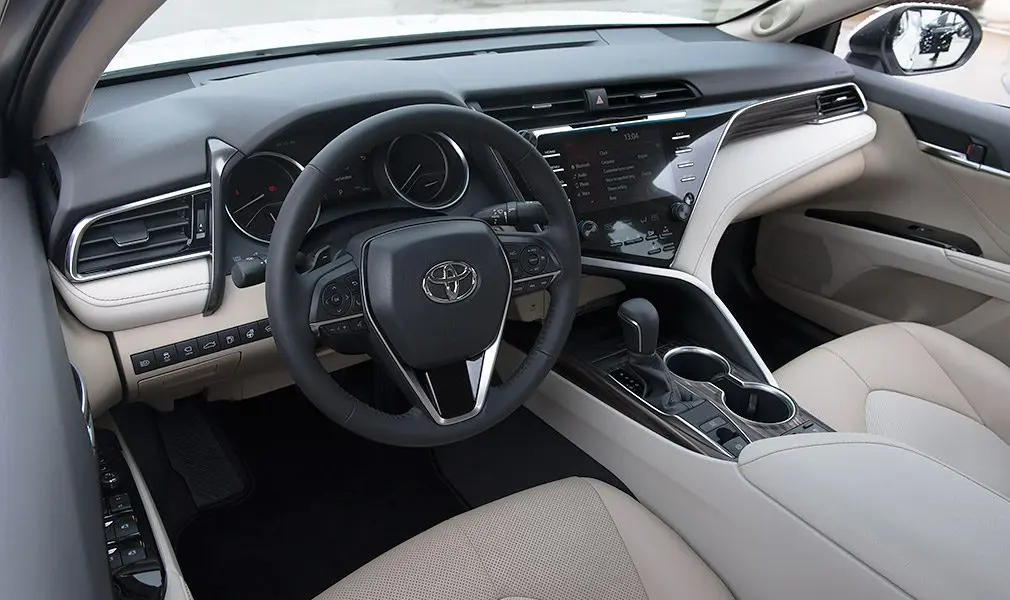
Moving to the new platform had a beneficial effect not only on comfort, but also on handling. And it's not just a tighter and more resilient damping setup that has reduced body roll and pitching, but also a redesigned steering. Now there is a rail with an electric amplifier installed directly on it.
In addition to the fact that the steering gear ratio itself has become different, and now the "steering wheel" from lock to lock makes 2 with a small turn, and not more than three, and the amplifier settings themselves are completely different. The electric booster is calibrated in such a way that there is no longer a hint of an empty steering wheel with an indistinct effort. At the same time, the steering wheel is not overweight: the effort on it is natural, and the reactive action is understandable, so the feedback has become much more transparent and clearer.

The line of power units has undergone the least changes on the Russian Camry. The base for cars assembled in St. Petersburg will continue to be an in-line two-liter petrol "four" with a capacity of 150 hp. With it, as before, will be combined with a six-speed "automatic".
The old 2,5-liter engine with a capacity of 181 hp will also be one step higher. At the same time, for example, in the North American market this engine was replaced by a modernized unit, with which the new 8-speed "automatic" from Aisin is already combined.
In our country, the advanced box will be available only on the top-end modification with a new 3,5-liter V-shaped "six". This motor was slightly adapted for Russia, derated under tax to 249 hp.
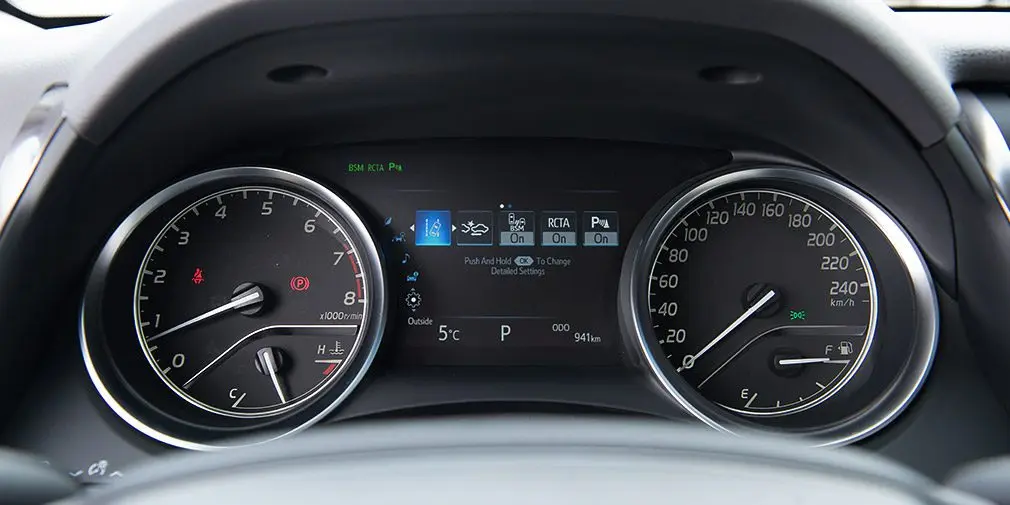
The maximum torque has increased by 10 Nm, so the top-end Camry has increased a little in dynamics. At the same time, Toyota promises that the average consumption of the new top-end modification will be noticeably lower than that of the previous Camry. As for the tandem of the modernized 2,5-liter unit and the 8-speed automatic transmission, they promise to integrate it into the domestic Camry a little later, explaining this by the small specifics of setting up the production of these units at the Russian plant.
But in what the Russian Camry does not differ from the car in other markets, it is in the set of technological equipment and options. The sedan, as elsewhere, will be available with an 8-inch head-up display, a surround view system, a 9-speaker JBL audio system, and a package of Toyota Saftey Sense 2.0 driver assistants. The latter now includes not only automatic light and traffic sign recognition, but also adaptive cruise control, a collision avoidance system that recognizes both cars and pedestrians, and a lane keeping function.